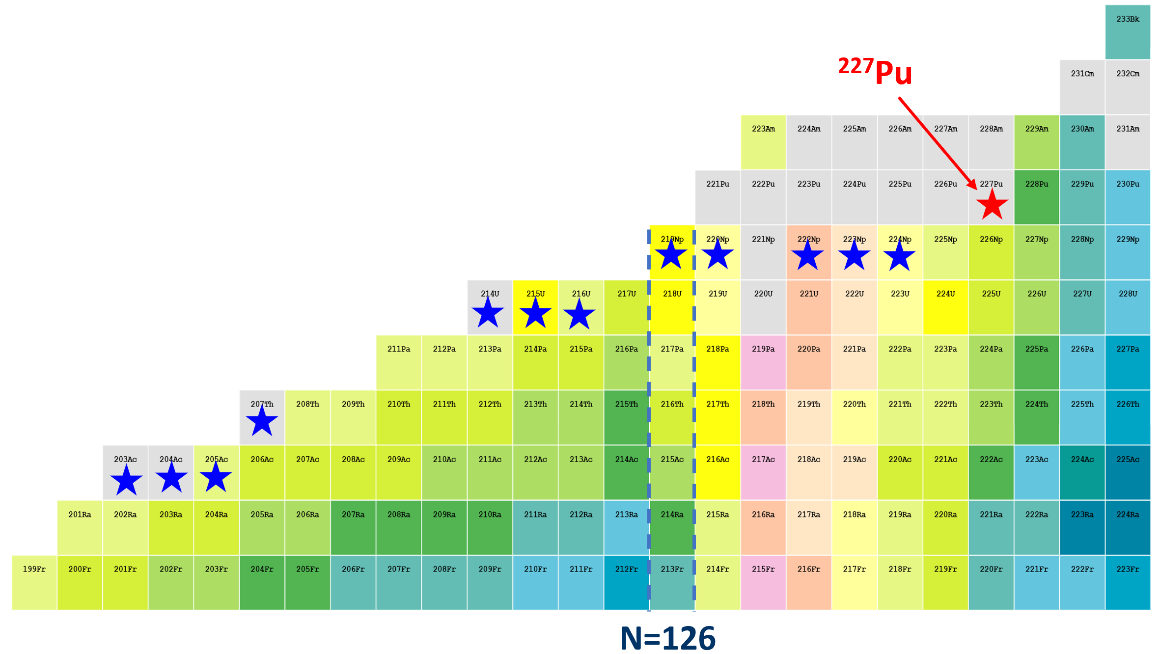
A research team led by researchers at the Institute of Modern Physics (IMP) of the Chinese Academy of Sciences (CAS) has synthesized a new plutonium isotope, plutonium-227. This study was published in Physical Review C.
The magic numbers of protons and neutrons, such as 2, 8, 20, 28, 50, 82, and 126, are correlated with shell closures. In past studies, systematic analyses have revealed a persistent weakening of the neutron shell closure of 126 up to uranium, making it fascinating to explore whether shell closures fade in the transuranium region.
“We have discovered the presence of the shell closure in neptunium isotopes through a series of experiments. However, due to the absence of experimental data, the robustness of this closure in plutonium isotopes remains unknown,” said Prof. GAN Zaiguo from IMP.
To probe unknown plutonium isotopes, the researchers at IMP and their collaborators carried out their experiment at the gas-filled recoil separator, Spectrometer for Heavy Atoms and Nuclear Structure, part of the Heavy Ion Research Facility in Lanzhou (HIRFL) in China.
Using the fusion evaporation reaction, the researchers synthesized plutonium-227, a very neutron-deficient plutonium isotope, for the first time. Plutonium-227 is the 39th new isotope discovered by IMP, and it is also the first plutonium isotope discovered by Chinese scientists.
From the nine observed decay chains, the researchers then measured the 𝛼-particle energy and half-life of plutonium-227 to be about 8191 keV and 0.78 s, respectively. The data fit quite well with the systematics of known plutonium isotopes.
The research team plans to investigate more plutonium isotopes, aiming to gain a deeper understanding of shell evolution in plutonium.
“The newly discovered plutonium-227 is still seven neutrons away from the magic number of 126. To study the robustness of the shell closure in plutonium, it is necessary to continue research on even lighter plutonium isotopes, including plutonium-221 to plutonium-226,” said Dr. YANG Huabin from IMP, first author of this study.

Figure: The region of the nuclear chart 87≤Z≤97 and 112≤N≤136 shows the new isotope plutonium-227 (red star) and the 12 nuclides (blue star) that were discovered at IMP. (Image by YANG Huabin)

86-10-68597521 (day)
86-10-68597289 (night)

52 Sanlihe Rd., Xicheng District,
Beijing, China (100864)

